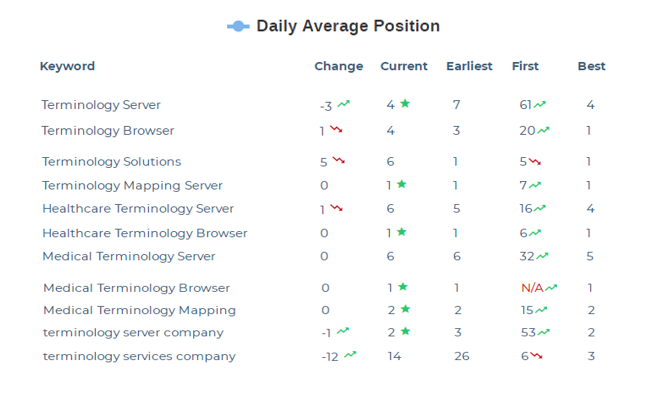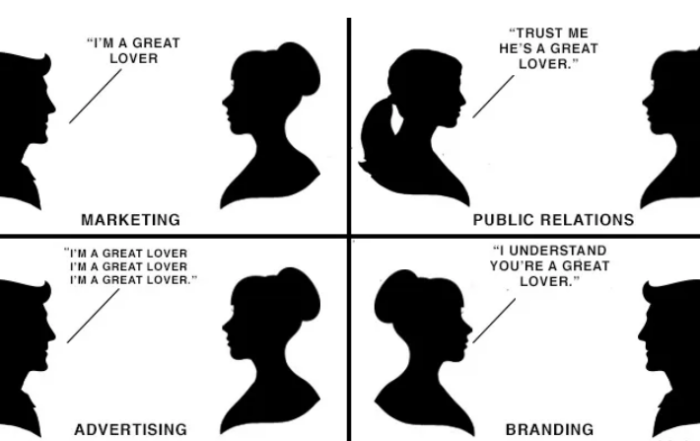
ESPY Awards | LA | 2015 – The brand of ESPN was developed so well that its spin-off properties and sub brands like the ESPY Awards hold their own equity.
On the face of it, branding is a comprehensive process of evoking a strong, positive perception of a business in a customer’s mind in a way that represents its products or services.
It involves a synergistic approach to combine various elements such as the logo, overall design elements, color schemes, tag lines, the company mission statement, and more with consistency. Branding and brand image show up in marketing statements, advertisements, storefronts, social media platforms, and promotional events.
The most effective branding strategies help the company to stand apart from its competitors in the minds of potential new customers. While at the same time also helping to build and reinforce a loyal customer base through a consistent brand identity.
New and loyal customers expect that a branding tone of voice is consistent throughout all communications. This goes beyond just conventional advertising and retail promotions.
An effective brand strategy and voice need to be consistent in all aspects down to email promotions, newsletters, the appearance of your website, customer service interactions, social media, and every other touchpoint of engagement.
One of the most important aspects of branding for retailers is to make sure that the in-store brand image is consistent with the user’s online experience. If you offer one type of brand image on your website, but you portray a completely different one in your brick-and-mortar retail locations, it can put customers off. Even if your products and services are technically superior to your competitors.
At the same time, in-store branding is more experiential than website branding. A potential customer can walk around the retail space, visually inspecting, touching, and interacting with things on a personal level. Whereas customers online are experiencing a two-dimensional experience. If your online brand image and your in-store are drastically different, it can easily generate an air of mistrust in potential customers.
The Impact of Branding
A strong, consistent brand image can have a massive impact on your company’s success. It plays directly into your business’s ability to acquire and retain customers at a much lower cost.
This is especially important in the hyper-competitive world of digital marketing and eCommerce, where new competitors seemingly emerge every day. By establishing and maintaining a strong, consistent brand message, you stay alive in people’s minds, even if they are momentarily distracted by the newest offering to hit the market.
By strategically constructing your brand through evocative storytelling, developing strong relationships, and consistent marketing messages, you further enhance the value of your visual assets. This allows you to shape your customers’ expectations.
By guiding them through every level and type of engagement, they learn to trust that your company will have the same values and commitment to quality tomorrow that you do today. This helps convert first-time customers into loyal ones for the highest possible return on investment.
It’s important to note that effective branding is strategic. Yet marketing is tactical. This is especially true with digital marketing, where the volume of messages users are exposed to everyday makes it easy for an inconsistent brand image to get lost in the shuffle. When you set higher objectives and clearly define your brand promise in a way that people can connect with, you gain the power to craft a strategic marketing plan with goals that are easier to achieve.
The Effects of Branding in eCommerce
Effective branding can empower your eCommerce. Though it requires careful planning and consistency. So, it’s best to have your branding strategy ironed out before you launch any type of online store or eCommerce site. This will spare you having to work backward to try to align your eCommerce experience with customer expectations.
When you create a strong brand image that people can relate to it also has to resonate well with the target audience on your eCommerce site. The last thing you want is for customers to have a clear expectation of what your brand image is from your primary website, only to be confused when they land at your eCommerce site that has a different look and feel.
Developing a Brand Persona
Defining your brand persona starts with understanding your customer base, and the various demographics within it making it easier to communicate to each segment effectively. This means understanding what motivates them and what attracts them to a company like yours.
In this way, the brand persona becomes the embodiment of your business’s personality. It also sends a clear message about what you will deliver in the customer experience.
The brand persona will be strongly influenced by the insights you glean from your target audience. It needs to include the tone of voice, the thoughtful use of language, and the kind of images that attract your potential customer’s attention.
Branding In Visual Assets
Your company’s visual assets are arguably the most powerful components of your brand image. This starts with nuts-and-bolts things like your basic graphics, color palette, font, packaging, and logo use.
From there your visual asset branding should focus on the products and services that your company is best known for. If you were Mcdonald’s, this would be an image of the Big Mac. If you were a janitorial service, it would be a picture of a person in a company uniform cleaning a room.
You also need to keep in mind that online shoppers don’t have the luxury of being able to physically touch or closely inspect your products. So, providing things like zoomed-in images and vividly written product descriptions becomes especially important.
Evoke Emotions in Branding
The most effective branding efforts produce a consistent emotional response that defines the customer experience. While you can never 100% control how people feel, you should make your best effort to ensure every interaction and customer point of engagement is aligned with your brand promise and on point with your brand guidelines.
This starts with obvious things like visual assets and brand language. Though you also need to be mindful to include things like easy return policies and convenient shipping arrangements that will engender a sense of trust when a customer interacts with your brand.









